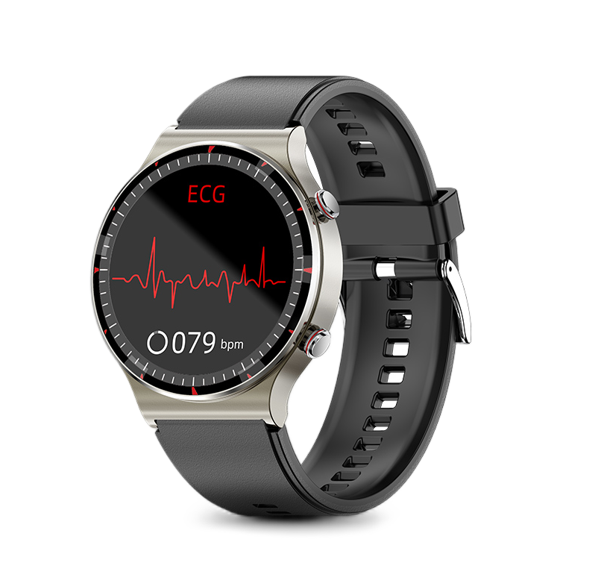The Future of Smart Watches: Combining AI with Wearable Devices
7/12/20255 min read


Introduction to Smart Watches and AI Technology
The evolution of smart watches has been marked by significant technological advances, moving from rudimentary digital timepieces to sophisticated wearable devices that seamlessly integrate with various facets of everyday life. The first iterations of wearable technology can be traced back to the early 1980s when devices, such as the Timex Data Link, began to emerge. However, it was not until the advent of smartphones that smart watches gained substantial traction as highly functional devices. Major brands, like Apple and Samsung, popularized the smart watch concept around 2010, showcasing capabilities far beyond simple timekeeping.
As smart watches have evolved, the integration of artificial intelligence (AI) technology has become a pivotal factor in enhancing their functionality. AI-powered algorithms enable these devices to learn user preferences, monitor health metrics, and provide personalized recommendations. For instance, health and fitness tracking features, such as heart rate monitoring and sleep analysis, are augmented by AI systems that analyze vast datasets to deliver insights tailored to individual users. This analysis not only relies on real-time data but also incorporates historical patterns, thereby improving the accuracy and relevance of the information presented to users.
Furthermore, voice recognition technology, driven by AI, has transformed the way users interact with their smart watches. Virtual assistants, such as Siri and Google Assistant, allow users to engage in hands-free communication, manage tasks, and receive notifications efficiently. As the smart watch market continues to expand, AI is poised to play an even more vital role in the development of next-generation devices, facilitating advancements in areas such as predictive analytics and enhanced user interfaces.
In summary, the combination of smart watches and artificial intelligence marks a turning point in wearable technology, redefining user experiences and setting the stage for innovative potential in the years to come. As we delve further into the future of smart watches, it becomes clear that AI will be central to their ongoing evolution.
AI-Driven Features and Innovations in Smart Watches
The integration of artificial intelligence (AI) into smart watches has ushered in a new era of wearable technology, transforming these devices into sophisticated health and lifestyle companions. One of the most pivotal AI-driven features is real-time health monitoring, which includes functionalities such as heart rate analysis that can detect fluctuations indicating potential health concerns. For instance, many modern smart watches are now equipped with sensors that continuously collect biometric data and use AI algorithms to analyze this information, thus providing users with predictive health insights. These insights enable users to take proactive steps toward their well-being, potentially averting serious health issues.
Another significant advancement lies in personalized recommendations, driven by AI's capability to learn from user behaviors and preferences. For instance, smart watches can now suggest specific workouts tailored to an individual’s fitness level and goals, enhancing the user experience. Activity tracking has also evolved; AI can interpret activity patterns and propose adjustments to help users achieve optimum performance. This personalized approach empowers users, motivating them to adhere to their fitness regimens more consistently.
Moreover, artificial intelligence plays a crucial role in enhancing the user interface of smart watches. Advanced voice recognition capabilities allow users to interact with their devices in a more intuitive manner, enabling functionalities such as sending messages or adding appointments through voice commands. Additionally, smart watches equipped with contextual awareness can adjust notifications and settings based on the user's location or activity, providing a seamless and personalized user experience. The application of AI in these various features emphasizes the potential of smart watches to not only serve as tools for convenience but also as essential partners in promoting healthier, more active lifestyles.
Challenges and Considerations for AI in Wearables
As artificial intelligence continues to permeate various sectors, the integration of AI into smart watches presents both significant advancements and formidable challenges. One pressing issue is privacy and data security. Smart watches collect an extensive range of personal information, including health metrics and location data. Ensuring that this sensitive information is protected against unauthorized access and breaches is crucial. Users must be assured that their data is handled responsibly and that stringent measures are in place to safeguard their privacy.
Another challenge lies in the battery life implications of running sophisticated algorithms. Enhanced functionality often comes at a cost; AI features typically require considerable computational power, which can drain battery life rapidly. Manufacturers need to balance advanced capabilities with energy efficiency to ensure that users do not sacrifice longevity for functionality. Innovating battery technology or developing more efficient algorithms may help mitigate this challenge.
Moreover, reliable performance in diverse environments is essential. Smart watches have applications that extend from fitness tracking outdoors to managing daily activities indoors. This variance often reveals discrepancies in device performance. AI algorithms must be robust and adaptable to ensure seamless operations in different conditions, such as varying temperatures, humidity levels, and connectivity issues.
User acceptance also plays a fundamental role in the successful integration of AI within wearable devices. Consumers must be willing to adopt these technologies, which requires a degree of trust in the accuracy and effectiveness of AI-driven functionalities. Manufacturers must prioritize user education and transparent communication about how AI enhances their experience to foster acceptance.
Lastly, ethical AI practices are imperative in the realm of wearable technology. Developers must navigate the fine line between innovation and ethical responsibility, considering implications such as bias in AI algorithms and the potential for misuse of data. Addressing these challenges thoughtfully will be crucial as the integration of AI in smart watches evolves.
The Future Outlook: Trends and Predictions for Smart Watches
The evolution of smart watches is closely intertwined with advancements in artificial intelligence (AI) and related technologies. As we look to the future, several key trends and predictions emerge, indicating how smart watches may reshape personal gadgetry and our daily lives. One notable trend is the integration of 5G connectivity into smart watches. This high-speed network will not only facilitate faster data transmission but also enable real-time health monitoring and enhanced communication capabilities. With 5G, users can expect their devices to stream data seamlessly, making features like fitness tracking and emergency alerts more efficient and responsive.
Another significant area for development is the fusion of health technology within smart watches. As users become increasingly health-conscious, smart watches are expected to incorporate advanced medical sensors that monitor not just physical activity but also vital signs in real time. This integration can lead to preventative healthcare measures, where individuals receive alerts about potential health issues long before they become serious. Collaborations between tech companies and the healthcare sector are likely to promote innovations that could transform smart watches into essential tools for health management and disease prevention.
Moreover, the societal impacts of widely adopted AI smart watches cannot be overlooked. As these devices become more integrated into everyday life, they may enhance individual productivity, encourage healthier lifestyles, and provide unprecedented convenience. However, this shift also raises questions regarding privacy and data security, making it imperative for manufacturers to adopt stringent measures to protect users' sensitive information.
In conclusion, the future of smart watches appears bright, with advancements in AI and technology promising to redefine their functionality and societal roles. The next few years will be crucial in shaping how these devices integrate into our lives, offering exciting prospects and challenges along the way.
